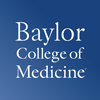Publications
Export 511 results:
Author Title [ Year ]
] Filters: First Letter Of Last Name is V [Clear All Filters]
Biallelic mutations in the 3' exonuclease TOE1 cause pontocerebellar hypoplasia and uncover a role in snRNA processing. Nat Genet 49, 457-464 (2017).
Biallelic mutations in the 3' exonuclease TOE1 cause pontocerebellar hypoplasia and uncover a role in snRNA processing. Nat Genet 49, 457-464 (2017).
Complex phenotypes associated with STIM1 mutations in both coiled coil and EF-hand domains. Neuromuscul Disord 27, 861-872 (2017).
De Novo Disruption of the Proteasome Regulatory Subunit PSMD12 Causes a Syndromic Neurodevelopmental Disorder. Am J Hum Genet 100, 352-363 (2017).
De novo mutations in HNRNPU result in a neurodevelopmental syndrome. Am J Med Genet A 173, 3003-3012 (2017).
A Dominant Mutation in Nuclear Receptor Interacting Protein 1 Causes Urinary Tract Malformations Dysregulation of Retinoic Acid Signaling. J Am Soc Nephrol 28, 2364-2376 (2017).
A Dominant Mutation in Nuclear Receptor Interacting Protein 1 Causes Urinary Tract Malformations Dysregulation of Retinoic Acid Signaling. J Am Soc Nephrol 28, 2364-2376 (2017).
Dual molecular diagnosis contributes to atypical Prader-Willi phenotype in monozygotic twins. Am J Med Genet A 173, 2451-2455 (2017).
Dual molecular diagnosis contributes to atypical Prader-Willi phenotype in monozygotic twins. Am J Med Genet A 173, 2451-2455 (2017).
Exome sequencing in Jewish and Arab patients with rhabdomyolysis reveals single-gene etiology in 43% of cases. Pediatr Nephrol 32, 2273-2282 (2017).
Exome sequencing in Jewish and Arab patients with rhabdomyolysis reveals single-gene etiology in 43% of cases. Pediatr Nephrol 32, 2273-2282 (2017).
Exome-wide Association Study Identifies GREB1L Mutations in Congenital Kidney Malformations. Am J Hum Genet 101, 789-802 (2017).
Exome-wide Association Study Identifies GREB1L Mutations in Congenital Kidney Malformations. Am J Hum Genet 101, 789-802 (2017).
Exome-wide Association Study Identifies GREB1L Mutations in Congenital Kidney Malformations. Am J Hum Genet 101, 789-802 (2017).
Exome-wide Association Study Identifies GREB1L Mutations in Congenital Kidney Malformations. Am J Hum Genet 101, 789-802 (2017).
An Expanded Multi-Organ Disease Phenotype Associated with Mutations in YARS. Genes (Basel) 8, (2017).
Haploinsufficiency of the E3 ubiquitin-protein ligase gene TRIP12 causes intellectual disability with or without autism spectrum disorders, speech delay, and dysmorphic features. Hum Genet 136, 377-386 (2017).
High Rate of Recurrent De Novo Mutations in Developmental and Epileptic Encephalopathies. Am J Hum Genet 101, 664-685 (2017).
High Rate of Recurrent De Novo Mutations in Developmental and Epileptic Encephalopathies. Am J Hum Genet 101, 664-685 (2017).
Identification of novel candidate disease genes from de novo exonic copy number variants. Genome Med 9, 83 (2017).
Identification of STAC3 variants in non-Native American families with overlapping features of Carey-Fineman-Ziter syndrome and Moebius syndrome. Am J Med Genet A 173, 2763-2771 (2017).
Identification of STAC3 variants in non-Native American families with overlapping features of Carey-Fineman-Ziter syndrome and Moebius syndrome. Am J Med Genet A 173, 2763-2771 (2017).
Identification of STAC3 variants in non-Native American families with overlapping features of Carey-Fineman-Ziter syndrome and Moebius syndrome. Am J Med Genet A 173, 2763-2771 (2017).
International Cooperation to Enable the Diagnosis of All Rare Genetic Diseases. Am J Hum Genet 100, 695-705 (2017).
Loss-of-Function Variants in MYLK Cause Recessive Megacystis Microcolon Intestinal Hypoperistalsis Syndrome. Am J Hum Genet 101, 123-129 (2017).
Multilevel analyses of SCN5A mutations in arrhythmogenic right ventricular dysplasia/cardiomyopathy suggest non-canonical mechanisms for disease pathogenesis. Cardiovasc Res 113, 102-111 (2017).
Multilevel analyses of SCN5A mutations in arrhythmogenic right ventricular dysplasia/cardiomyopathy suggest non-canonical mechanisms for disease pathogenesis. Cardiovasc Res 113, 102-111 (2017).
Multilevel analyses of SCN5A mutations in arrhythmogenic right ventricular dysplasia/cardiomyopathy suggest non-canonical mechanisms for disease pathogenesis. Cardiovasc Res 113, 102-111 (2017).
Multilevel analyses of SCN5A mutations in arrhythmogenic right ventricular dysplasia/cardiomyopathy suggest non-canonical mechanisms for disease pathogenesis. Cardiovasc Res 113, 102-111 (2017).
Mutations in ARMC9, which Encodes a Basal Body Protein, Cause Joubert Syndrome in Humans and Ciliopathy Phenotypes in Zebrafish. Am J Hum Genet 101, 23-36 (2017).
Mutations in KDSR Cause Recessive Progressive Symmetric Erythrokeratoderma. Am J Hum Genet 100, 978-984 (2017).
Mutations in KEOPS-complex genes cause nephrotic syndrome with primary microcephaly. Nat Genet 49, 1529-1538 (2017).
Mutations in KEOPS-complex genes cause nephrotic syndrome with primary microcephaly. Nat Genet 49, 1529-1538 (2017).
Mutations in KEOPS-complex genes cause nephrotic syndrome with primary microcephaly. Nat Genet 49, 1529-1538 (2017).
Mutations in KEOPS-complex genes cause nephrotic syndrome with primary microcephaly. Nat Genet 49, 1529-1538 (2017).
Mutations in KEOPS-complex genes cause nephrotic syndrome with primary microcephaly. Nat Genet 49, 1529-1538 (2017).
Mutations in sphingosine-1-phosphate lyase cause nephrosis with ichthyosis and adrenal insufficiency. J Clin Invest 127, 912-928 (2017).
Novel Genetic Triggers and Genotype-Phenotype Correlations in Patients With Left Ventricular Noncompaction. Circ Cardiovasc Genet 10, (2017).
A novel mutation in GMPPA in siblings with apparent intellectual disability, epilepsy, dysmorphism, and autonomic dysfunction. Am J Med Genet A 173, 2246-2250 (2017).
Patients with a Kabuki syndrome phenotype demonstrate DNA methylation abnormalities. Eur J Hum Genet 25, 1335-1344 (2017).
Phenotypic spectrum of autosomal recessive congenital ichthyosis due to PNPLA1 mutation. Br J Dermatol 177, 319-322 (2017).
Phenotypic spectrum of autosomal recessive congenital ichthyosis due to PNPLA1 mutation. Br J Dermatol 177, 319-322 (2017).
Presynaptic congenital myasthenic syndrome with a homozygous sequence variant in LAMA5 combines myopia, facial tics, and failure of neuromuscular transmission. Am J Med Genet A 173, 2240-2245 (2017).
Primary immunodeficiency diseases: Genomic approaches delineate heterogeneous Mendelian disorders. J Allergy Clin Immunol 139, 232-245 (2017).





